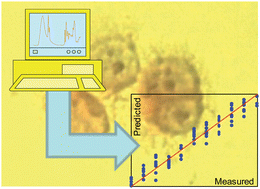Combining metabolic fingerprinting and footprinting to understand the phenotypic response of HPV16 E6 expressing cervical carcinoma cells exposed to the HIV anti-viral druglopinavir
Abstract
Recently, it has been reported that the anti-viral

* Corresponding authors
a
School of Chemistry, Manchester Interdisciplinary Biocentre, The University of Manchester, 131 Princess Street, Manchester, UK
E-mail:
roy.goodacre@manchester.ac.uk
Fax: +44 (0)161 3064556
Tel: +44 (0)161 3064480
b The University of Manchester, Gynaecological Oncology Laboratories, School of Cancer & Enabling Sciences, St Mary's Hospital, Manchester, UK
c Manchester Centre for Integrative Systems Biology (MCISB), Manchester Interdisciplinary Biocentre, The University of Manchester, 131 Princess Street, Manchester, UK
Recently, it has been reported that the anti-viral

 Please wait while we load your content...
Something went wrong. Try again?
Please wait while we load your content...
Something went wrong. Try again?
D. Kim, R. M. Jarvis, Y. Xu, A. W. Oliver, J. W. Allwood, L. Hampson, I. N. Hampson and R. Goodacre, Analyst, 2010, 135, 1235 DOI: 10.1039/B923046G
To request permission to reproduce material from this article, please go to the Copyright Clearance Center request page.
If you are an author contributing to an RSC publication, you do not need to request permission provided correct acknowledgement is given.
If you are the author of this article, you do not need to request permission to reproduce figures and diagrams provided correct acknowledgement is given. If you want to reproduce the whole article in a third-party publication (excluding your thesis/dissertation for which permission is not required) please go to the Copyright Clearance Center request page.
Read more about how to correctly acknowledge RSC content.
 Fetching data from CrossRef.
Fetching data from CrossRef.
This may take some time to load.
Loading related content
